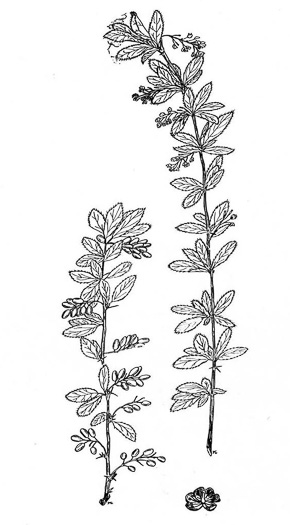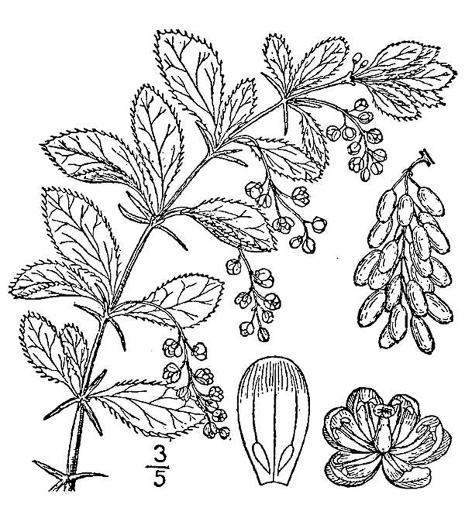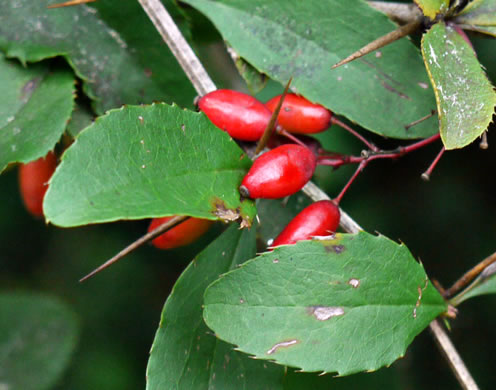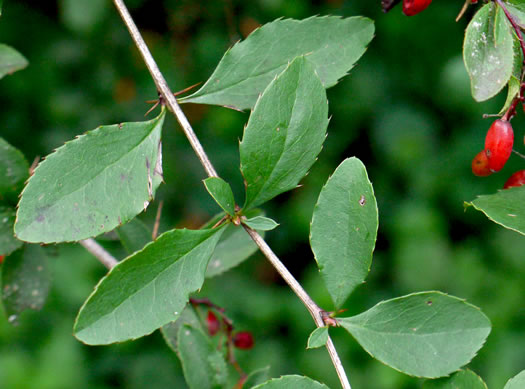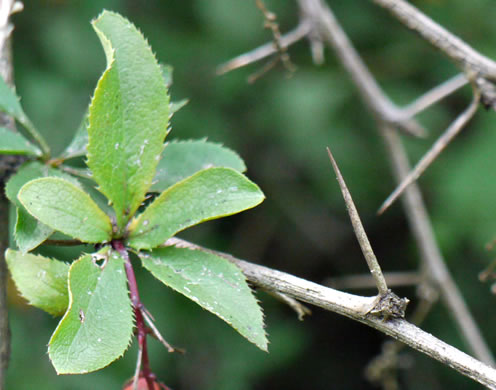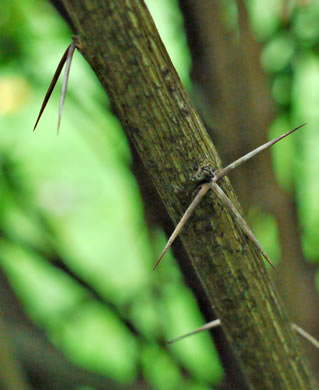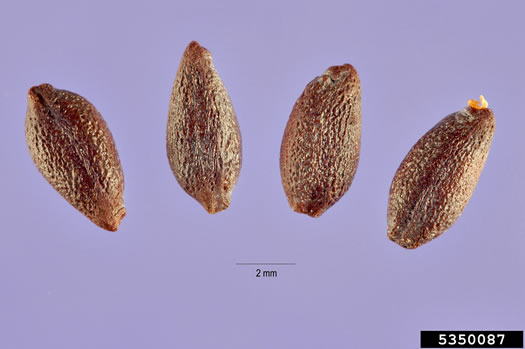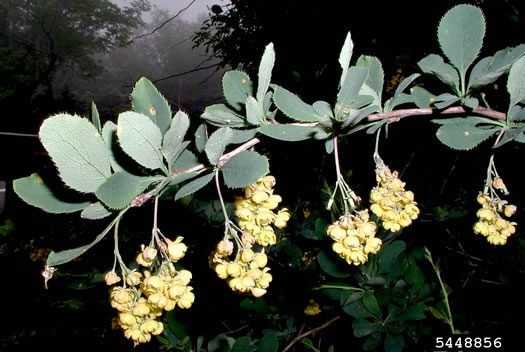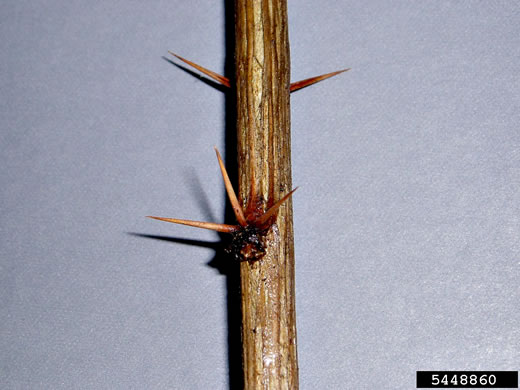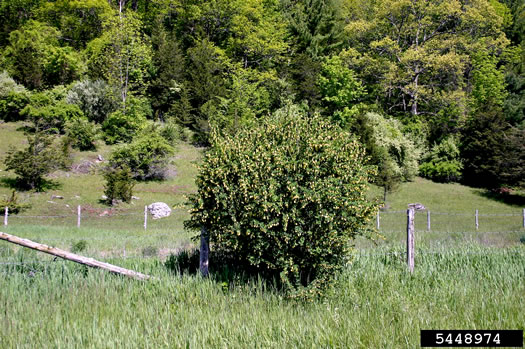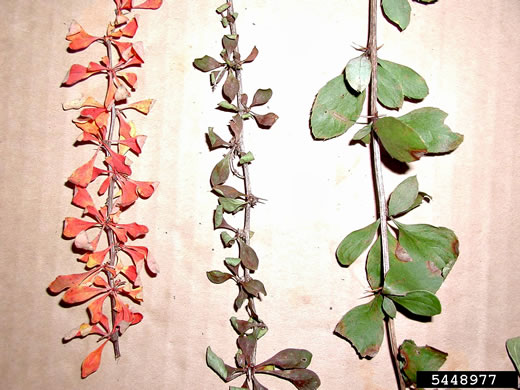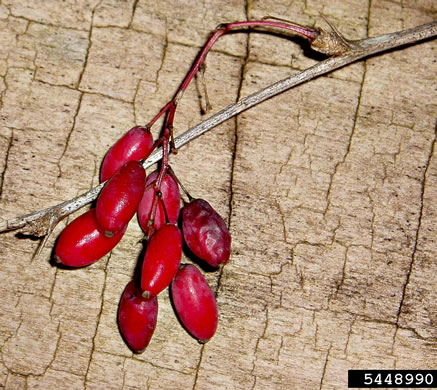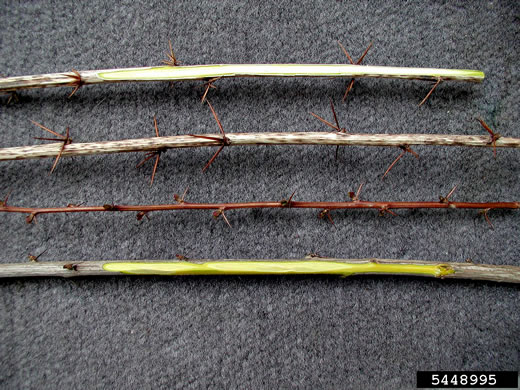Spermatophytes (seed plants): Angiosperms (flowering plants): Eudicots: Ranunculales
WEAKLEY'S FLORA OF THE SOUTHEASTERN US (4/24/22):
Berberis vulgaris
FAMILY
Berberidaceae
Go to FSUS key
Dig deeper at SERNEC, a consortium of southeastern herbaria.
Check out EDDMapS.org to see where this has been reported.
Learn more about European Barberry from the Vascular Plants of North Carolina.
Berberis vulgaris serves as an alternate host to wheat rust and has been subjected to eradication programs for over half a century, per Weakley's Flora (2022)
SYNONYMOUS WITH
PLANTS NATIONAL DATABASE:
Berberis vulgaris
FAMILY
Berberidaceae
SYNONYMOUS WITH Floristic Synthesis of North America. BONAP (Kartesz, 2021)
Berberis vulgaris
SYNONYMOUS WITH Flora of North America
Berberis vulgaris
COMMON NAME:
European Barberry, Common Barberry
To see larger pictures, click or hover over the thumbnails.
JK Marlow jkm140816_675
August Jackson County NC
High Hampton Inn
Berries red, not pruinose, per Weakley's Flora (2015).
JK Marlow jkm140816_676
August Jackson County NC
High Hampton Inn
Bark of second-year branches gray, glabrous, per Flora of North America.
JK Marlow jkm140816_677
August Jackson County NC
High Hampton Inn
Leaf margins finely serrate, each w (8)16-30 teeth tipped w spines or bristles, per Flora of North America.
Leslie J. Mehrhoff, University of Connecticut, Bugwood.org bug_5448856
Month Unknown
Inflorescences racemose, lax, 10-20-flowered, per Flora of North America.
Leslie J. Mehrhoff, University of Connecticut, Bugwood.org bug_5448860
Month Unknown
Spines present, simple or 3-fid, per Flora of North America.
Leslie J. Mehrhoff, University of Connecticut, Bugwood.org bug_5448974
Month Unknown
Commonly cultivated & widely naturalized in 17-1800s, now infrequent or absent, per Flora of North America.
Leslie J. Mehrhoff, University of Connecticut, Bugwood.org bug_5448977
Month Unknown
An alternate host for wheat rust fungus, per Woody Plants of the Southeastern US: A Winter Guide (Lance, 2004).
Leslie J. Mehrhoff, University of Connecticut, Bugwood.org bug_5448990
Month Unknown
Berries ellipsoid (8-10mm long, 4-5mm broad), 10-20 in a raceme, per Weakley's Flora (2015).
Leslie J. Mehrhoff, University of Connecticut, Bugwood.org bug_5448995
Month Unknown
Inner bark is yellow; spines mostly branched, per Woody Plants of the Southeastern US: A Winter Guide (Lance, 2004).
WEAKLEY'S FLORA OF THE SOUTHEASTERN US (4/24/22):
Berberis vulgaris
FAMILY
Berberidaceae
SYNONYMOUS WITH
PLANTS NATIONAL DATABASE:
Berberis vulgaris
FAMILY
Berberidaceae
SYNONYMOUS WITH
Floristic Synthesis of North America. BONAP (Kartesz, 2021)
Berberis vulgaris
SYNONYMOUS WITH
Flora of North America
Berberis vulgaris
If a search such as "Carex leptalea var. leptalea" doesn't deliver the results you want, try "Carex leptalea".
Or, to minimize chances of a misspelling, try just "Carex le".
Less is more: If "pencil flower" doesn't deliver the results you want, try "pencil".

